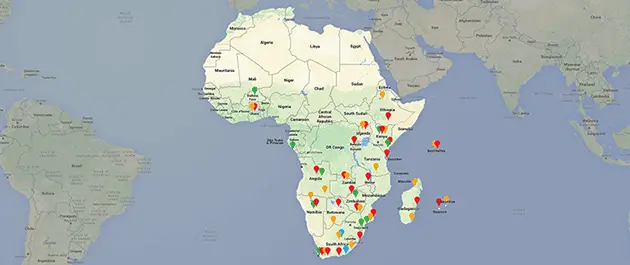‘Expatria’ – a potential Tourism Source Market?
If ‘Expatria’ – an imaginary nation of expatriates/immigrants – were a nation, it would be the fifth most populous on the planet. In this article William Purbrick quantifies the demographics and size of this potential tourism source market.
First off, let me explain that by ‘expat’ I mean anyone who lives outside of his or her nation of origin for at least six months of any twelve-month period.
By this definition, there are an estimated 232 million people living outside of their nation of origin. At The Expat Survey, we conduct independent research, and based on our 2013 survey statistics we placed the world’s expatriates into an imaginary country, to determine how that country would look and feel.
Expatria’s Population
Expatria would have a population of 232 million, rising from 154 million in 1990 and 175 million in 2000, according to UN statistics. This ranks Expatria as the fifth most populous nation on the planet, over three and a half times the number of people in the United Kingdom and sandwiched between Indonesia and Brazil – half the population size of the European Union. Expatria’s population growth rate of over a third since 1990 is matched by Brazil and Indonesia, two of the fastest growing economies worldwide.
The population of Expatria must be considered one of the most diverse on the planet. The largest proportion of people coming from South Asia, accounting for 36 million of the population, with about 19 million migrants living in Europe, some 16 million in Northern America and about 3 million in Oceania.
The second and third largest groups coming from Central America and the Caribbean, 17.4 million Central Americans are living in the US. The population of Expatria equates to 3.2% of the world’s population but what do we really know about them?
The understanding of Expatria is in black-and-white with broad strokes, while the UN suggest a worldwide population of extra-nationals in 232 million, independent research conducted by Finaccord suggests a figure 56 million worldwide in 2014. At least there are estimates for the size of this universe, beyond quantitative figures, little is known of the quality and composition of the lives of expatriates.
Expatria’s Age
The average age of the citizens of Expatria would be 38, being at their average youngest in Africa and oldest in Oceania. UN statistics estimate that 48% of the population would be women and 26 million of the residents aged 65+ years of age and proportionally greater represented than they are in the world population, 11% of the migrant population yet just 8% of the world’s population. Interestingly, 20-34 year olds represent 64 million people and also less females, which can be attributed to the transit of male migrant workers, especially those based in Asia.
Expatria’s Wealth
Measuring the wealth of Expatria is difficult; however remittance figures estimated by the World Bank give some indicator of the economic power of expatriates worldwide. The World Bank estimates $435 billion will be sent in remittance in 2014, outweighing ODA (official development assistance) by a factor of three. Although being a crude comparison, this figure would project Expatria as a top 40 world economy in 2014 if taken as its GDP. This is without considering the estimated wealth of tax exiles to be found in the havens of Switzerland, Luxembourg and the like. A study conducted by economist James Henry suggests at least £13 trillion ($20tn) squirreled away worldwide, which would catapult its ranking amongst the top few.
Expatria’s Occupation
The citizens of Expatria are workers in a diverse range of fields that have significant economic power. European immigrants (European Economic Area) in the UK have contributed £20bn a year from 2001 to 2011 according to a study conducted by University College, London. Not only are expats economic contributors but work in various sectors. In the case of the UK, The Telegraph states that migrants from within the EU primarily fulfilling manual work, in factories and farming, whilst Non-EU immigrants are prominent in professional roles in health and science.
This article has highlighted that there is a massive population, globally-based, that tourism destination marketers know very little about. The findings of the Expat Survey 2013 illuminated that expatriates spend more time on sites from their country of origin rather than sites of their country of residence; 70% still choosing to shop online from native sites. The deficiency of information highlights the need for independent research, the need for the The Expat Survey.
Sources: CIA Factbook, UN, The Guardian, The Telegraph, UCL, The Expat Survey 2013, Finaccord.
About the author: William Purbrick is Research and Digital Assistant at London based The Expat Survey. TheExpatSurvey.com is the largest ‘independent’ annual research programme of those living outside their country of origin; and is a leading authority on what, when, why and how expatriates communicate and consume.
For more information visit www.theexpatsurvey.com



